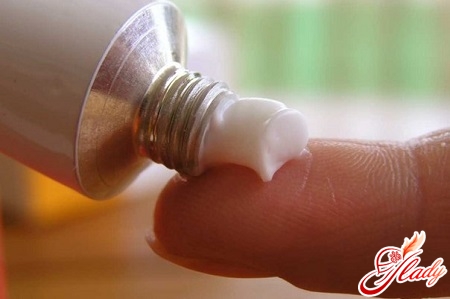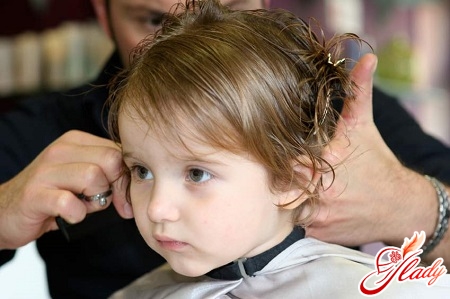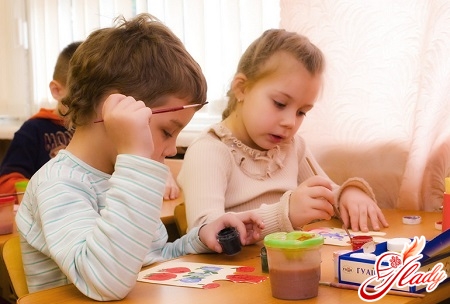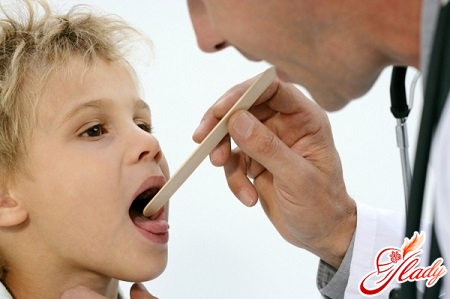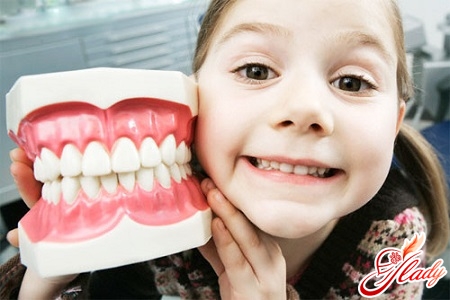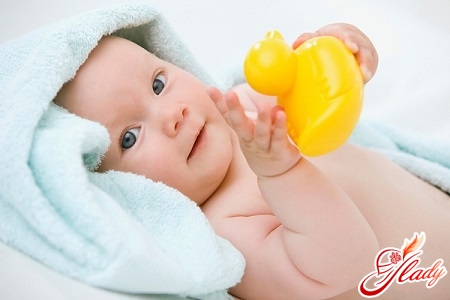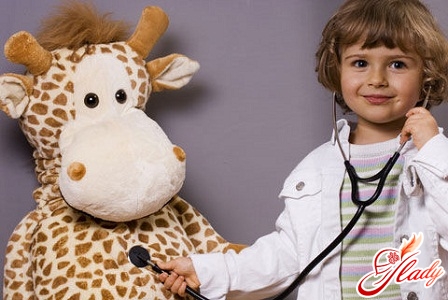 Epilepsy in children... This disease affects everyoneby ear, but few ordinary people have any idea what it is. But epilepsy is not such a rare disease, unfortunately. According to statistics, every hundredth inhabitant of the planet suffers from this disease - you must agree, this is a very impressive figure. What is this mysterious epilepsy? Doctors describe it as follows: epilepsy is a unique complex of symptoms, the distinctive feature of which is seizures or their equivalents - both mental and vegetative. Most often, children in the first few years of life suffer from epileptic seizures - about 80% of all epileptic seizures occur at this age. The older the child becomes, the less likely it is that epileptic seizures will occur. This is explained by the fact that as the child grows, epileptic activity - the so-called seizure readiness - significantly decreases. All parents who find out that their children suffer from epilepsy, at first fall into a real panic. However, I would like to calm down a little moms and dads who have encountered this trouble. In fact, the future of children suffering from epileptic seizures is not as gray and joyless as it may seem at first glance. Even history itself speaks of this - many great people of the past suffered from severe epileptic seizures. However, despite their illness, they not only reached professional heights, but also immortalized their names in history forever. And note that they achieved all this at a time when there were no anticonvulsant drugs in sight.
Epilepsy in children... This disease affects everyoneby ear, but few ordinary people have any idea what it is. But epilepsy is not such a rare disease, unfortunately. According to statistics, every hundredth inhabitant of the planet suffers from this disease - you must agree, this is a very impressive figure. What is this mysterious epilepsy? Doctors describe it as follows: epilepsy is a unique complex of symptoms, the distinctive feature of which is seizures or their equivalents - both mental and vegetative. Most often, children in the first few years of life suffer from epileptic seizures - about 80% of all epileptic seizures occur at this age. The older the child becomes, the less likely it is that epileptic seizures will occur. This is explained by the fact that as the child grows, epileptic activity - the so-called seizure readiness - significantly decreases. All parents who find out that their children suffer from epilepsy, at first fall into a real panic. However, I would like to calm down a little moms and dads who have encountered this trouble. In fact, the future of children suffering from epileptic seizures is not as gray and joyless as it may seem at first glance. Even history itself speaks of this - many great people of the past suffered from severe epileptic seizures. However, despite their illness, they not only reached professional heights, but also immortalized their names in history forever. And note that they achieved all this at a time when there were no anticonvulsant drugs in sight.
What is epilepsy?
Modern medicine has made significant progressresearch into the nature of epilepsy: everything is known about the mechanisms underlying the disease today. And today we will introduce our readers to these mechanisms. The human brain has a certain bioelectrical activity that occurs as a result of work. This bioelectrical activity is very different in an adult and a child. This same bioelectrical activity is represented by various electrical discharges - waves. During normal functioning of the brain, these waves are strictly defined. But if a child suffers from epilepsy, the bioelectrical discharges change significantly, become pathologically strong and sharp, like lightning charges. It goes without saying that such a phenomenon cannot but have a negative impact on the normal functioning of the brain - its work is disrupted. What happens during an epileptic seizure? An epileptic seizure, in essence, is nothing more than a paroxysm - a convulsive attack. During this attack, a child suffering from epilepsy experiences a disturbance of consciousness: the child is unable to control his behavior, hear and understand speech addressed to him, or follow instructions received from adults. After the seizure is over, the child does not remember anything - a manifestation of the so-called short-term epileptic amnesia. It goes without saying that the bioelectrical activity of the brain will not be disrupted without a good reason and the child will not develop a predisposition to epileptic seizures. And the reason for the disruption of bioelectrical activity is the resulting imbalance in the ratios between the most important active substances that have both an exciting and an inhibitory effect on brain cells. In addition, epileptic seizures are often provoked by a disturbance in normal insight, as well as water-salt balance. For some time, sometimes even a very long time, all of the above pathological processes can proceed absolutely asymptomatically, without manifesting themselves in any way. However, under certain factors, they will not be slow to make themselves known. Such provoking factors may include:
- Various brain injuries, both severe and minor.
- Violation of high-grade cerebral circulation of any nature of origin.
- Tumors of the brain of any etiology.
- Heavy infections that affect the whole body.
- Severe intoxication of the body, affecting the brain.
However, in many cases of epilepsy, everythingthe above reasons turn out to be completely irrelevant. For a child to develop epilepsy, a simple genetic predisposition is enough. It is the genetic predisposition that causes increased excitability of brain cells, disruption of metabolic processes, and normal electrical activity.
Types of epilepsy in children
Doctors distinguish several varietiesepilepsy, depending on the nature of its origin and the characteristics of the disease. Different types of epilepsy require completely different principles of treatment and care for a sick child. So, what is this mysterious epilepsy?
- Idiopathic anemia.
Immediately after the doctors havereason to believe that the child suffers from epilepsy - usually after the first attack - they begin to conduct a thorough examination of the child, the purpose of which is to identify the underlying causes of this disease. However, sometimes doctors fail to find the causes that provoked the development of epilepsy. And in this case, we are talking about the "asymptomatic" form of the disease - idiopathic anemia. In such cases, when collecting anamnesis, it turns out that one of the baby's relatives, often very, very distant, also suffered from epileptic seizures. But do not panic if one of your relatives and friends suffered from epilepsy - this does not mean that epilepsy will necessarily accompany your children. Only a tendency to epileptic seizures can be inherited, but not the disease itself. Moreover, when decoding the electroencephalogram, doctors clearly see the pathological electrical activity of the brain characteristic of epilepsy, but the disease itself is not always present in the child. It manifests itself only in the presence of certain unfavorable factors. Incidentally, the prognosis for the idiopathic form is the most favorable. And the course of this form of the disease is also the easiest.
- Symptomatic epilepsy.
Symptomatic epilepsy, or secondary,develops if the cause of its occurrence is some organic damage to the brain. There are quite a large number of different factors that can lead to the occurrence of organic damage to the brain. Such factors include:
- Adverse effects on the child during intrauterine development.
- The defeat of the central nervous system that resulted from the resulting birth trauma.
- Asphyxia of newborns flowing in severe form.
All these factors, provided there is a genetic predisposition, can form an epileptic focus in the cerebral cortex of a child.
Other features of the forms of anemia
In addition, both somatic and idiopathic types of epilepsy are divided into two subtypes:
- Localized form of epilepsy.
Localized epilepsy is one in which the epileptic focus in a child is strictly localized in a specific area of the cerebral cortex.
- Generalized form of epilepsy.
If a child suffers from a generalized form of epilepsy, the entire brain is involved in the process of an epileptic seizure, without excluding any part of the brain.
- Mixed form of epilepsy.
In addition to localized and generalized formsThere is another type of epilepsy - mixed. An epileptic seizure begins as a localized one, but very quickly transforms into a generalized one. Such epileptic signs are also called secondarily generalized. Epilepsy in children in this case has symptoms of both forms of the disease.
Large epileptic seizures
However, it is not only the disease itselfis divided into different types. The same applies to the epileptic seizures themselves. Doctors distinguish two types of epileptic seizures, which differ significantly from each other and require different approaches to treatment: In most cases, children experience grand mal generalized epileptic seizures. Such seizures are accompanied by a sudden loss of consciousness, the child falling, and convulsions. An epileptic seizure occurs in several phases. In the first phase, the child begins to have convulsions - a kind of involuntary tension of all the muscles of the body and limbs. The child's breathing process stops for a while, which is why the skin takes on a bluish tint. After 30-40 seconds, breathing is restored, and the seizure flows into the tonic phase. Convulsive spasms in the limbs subside, turning into light rhythmic twitching. These twitches end in about a couple of minutes. After this, the phase of the so-called "post-seizure" sleep begins. The sleep lasts only a few minutes, after which the sick child wakes up, remembering nothing about what happened during the seizure. Due to the fact that the seizure is accompanied by tonic convulsions, including convulsions of the chewing muscles, the sick baby during the seizure is very likely to bite his tongue. And, in addition, at the peak of an epileptic seizure, the sick child often experiences involuntary urination. Signs of epilepsy in infants may differ slightly. There are a number of features of large generalized seizures in babies, the features of which should be known to all parents who have encountered such a problem. This knowledge will help parents protect their baby from unnecessary complications during seizures:
- Convulsions. During tonic convulsions, very carefully but firmly hold the arms and legs so that the child does not accidentally hurt himself - does not scratch himself or hit himself on something.
- Biting the tongue.As mentioned above, very often during epileptic seizures the child bites the tongue. Be sure to remember this and during an attack of the disease be sure to hold the child's tongue. Your doctor will show you how to do this correctly.
- "Post-seizure" sleep.After an epileptic seizure, the child enters post-seizure sleep. It is highly advisable for parents not to disturb their child for a few minutes and let him wake up on his own. By the way, the child may experience weakness in the arms and legs for about two to three hours.
There is also such a concept asepileptic status. Epileptic status is the name given to cases in which epileptic paroxysms continue one after another, and their duration is constantly increasing. Such a condition puts the child's life at risk, so it is necessary to take him to the nearest medical facility as soon as possible or call an ambulance if you are at home. As a rule, such a phenomenon occurs very, very rarely. Most often, a child has isolated epileptic seizures that do not pose any threat to his life. However, sometimes, extremely rarely, a child's epilepsy begins with such an epileptic status, which requires immediate implementation of a set of resuscitation measures.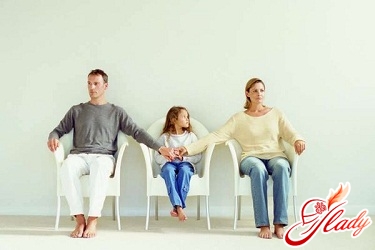
Harbinger of epileptic seizure in children
As a rule, most children have epilepticthe seizure occurs completely unexpectedly, like a bolt from the blue, when nothing seems to foretell the approach of an epileptic seizure. However, sometimes some children feel the approach of an attack a few minutes, and sometimes even hours, noting changes in their condition. Of course, such a phenomenon is observed only in older children who already understand everything and can note changes in their well-being. After all, a small child, as you understand, is not able to do this. Such harbingers of an epileptic seizure include:
- Headache.Moreover, it is necessary to note that headache can be absolutely any - sharp, aching, mild or severe, lasting only a couple of minutes or longer. However, remember that headache can be a sign of other diseases, often quite serious.
- Irritability.A child's sudden, unreasonable irritability and tearfulness may also indicate an approaching epileptic seizure. However, remember that a child's mood is a very changeable thing. Therefore, not every tantrum indicates that an epileptic seizure is about to begin.
- Loss of appetite. Sometimes, shortly before an attack, children almost completely lose their appetite. And sometimes nausea and vomiting begin.
Small epileptic seizures
Besides the big ones, there are also small ones.epileptic seizures. Their manifestation is very diverse, but strong convulsions and falls, which are typical for a grand mal seizure, are not observed. The duration of epileptic seizures also varies - minor ones last only a few seconds. A sick child suddenly faints, his consciousness is switched off. However, it returns literally after a few seconds, and the child calmly continues to do the same thing as before - play, read, watch TV. As a rule, small children do not even understand that something has happened to them, and only at an older age does the child realize that something is happening to him. Minor epileptic seizures can be quite regular - up to several times a day. Do doctors distinguish different forms of minor epileptic seizures? However, the most common is absence. They are very similar to those described just above - the child freezes for a couple of seconds, losing touch with the outside world. He does not fall, he does not have convulsions. Such forms of epileptic activity are most typical for school-age children, and their frequency can reach several dozen per day. Such children have a very poor performance at school: they become inattentive, and from the outside it may seem that the child is simply preoccupied with his own thoughts at the time of an epileptic seizure. Very often, gaps in text can be observed in the child's notebook - they occur just at the moment of an epileptic seizure. It is extremely important for parents and teachers to remember this feature of minor epileptic seizures. In the event that a child's performance at school has significantly worsened for no apparent reason, he has gaps in writing, an absent look - do not rush to scold and punish the child. You should consult a doctor to rule out the possible presence of such a disease in the child. In no case should you ignore such phenomena. It is much better if doctors examine the child and do not find a disease than not examine him, and it remains undiagnosed. Subsequently, in the absence of necessary treatment, the disease will continue to progress.
Diagnosis of the disease
Because epileptic seizures havequite a variety of manifestations, diagnosis of the disease is often extremely difficult. Often, the description of convulsive syndromes by parents is very similar to the description of true epileptic seizures. However, later, during an in-depth detailed examination, the doctor understands that the fact is that the child does not actually suffer from epilepsy. As a rule, if the child suffers from a convulsive syndrome, and not from epilepsy, the causes that cause the seizures will be established quite quickly. After the child receives the necessary treatment, and the causes are eliminated, the occurrence of seizures in the child will stop. There is also another type of seizures - febrile. Such a convulsive symptom occurs against the background of a significantly elevated body temperature. As a rule, such a reaction to hyperthermia is an individual feature of the child's body, and no treatment is required. Diagnosis in the presence of a convulsive syndrome in a child requires a highly qualified doctor, experience and a responsible approach to this issue. The doctor should ask the parents in detail about how long ago the child began having attacks, how often they last, their duration, and the specifics of their course. After this, the doctor will prescribe an additional examination for the child:
- Electroencephalographic examination.
- Computer or magnetic resonance imaging.
- Positron emission tomography.
- Neurosonography.
- Dopplerography of cerebral vessels.
And based on all the data received, the doctor will determine whether epilepsy is present or whether the convulsive syndrome is caused by some other reasons.
First aid for a child with epileptic seizure
As mentioned above, the child duringan epileptic seizure requires first aid. Strictly speaking, the real threat to the child's health is not the short-term epileptic seizures themselves, but the loss of consciousness by the child during it and, as a result, the baby's fall. That is why all parents and other adults surrounding a sick child should know exactly how to behave with the child during an epileptic seizure. And not just know it in theory, but be able to apply it in practice. How to help a child during an attack has already been described above. But it is also worth mentioning what to do after the seizure is over. Follow these rules:
In some cases, it is better not to act independently, but to call an ambulance as soon as possible. Such cases include:
- The child had a convulsive attack for the first time.
- The duration of seizures lasted more than five minutes.
- Seizures repeated in less than 30 minutes.
- During the seizures, the child was injured.
- After cramping, the child's breathing does not return to normal within three minutes, remains convulsive, heavy and uneven.
Treatment of epilepsy in children
Treatment of epilepsy is quite complicated and takes time.a very long time, practically the whole life of the child. Treatment should be prescribed only by a doctor. The treatment regimen is selected strictly individually, taking into account the general condition of the child, his age and the nature of the disease. A huge part of the treatment falls on the shoulders of the parents. As already mentioned, treatment is often necessary for a child throughout his life. The main task assigned to the treatment of epilepsy is to prevent the recurrence of epileptic seizures. Or, at least, to reduce their intensity and frequency of occurrence. This article will not provide the names of any drugs for epilepsy. All anticonvulsant pharmacological agents should be prescribed only by a doctor, taking into account the examination data and the individual reaction of the child's body to a particular drug. There are very strict principles for the treatment of this disease. Almost all doctors strictly follow them, and parents should know about them. It is very important to choose the right dosage of the drug - it must strictly correspond to the age and weight of the child. At the very beginning of treatment, not the entire age dose of the antiepileptic drug is prescribed, but only a part of it. The dosage is increased gradually, carefully monitoring the child's health, until the optimal one is selected. The effectiveness of the drug can be assessed no earlier than 14 days after the start of taking the medicine. As a rule, the selected dosage of the drug does not change for several years. Important! All drugs must be taken by the child systematically! It is unacceptable to miss a single dose! If this principle of taking medications is violated, the course of the disease worsens significantly, the attacks become more frequent and pronounced. The chances of your child's recovery are also significantly reduced. In addition, an independent reduction in the dosage of the drug or its complete cancellation can cause such a complication as the development of status forms of epileptic seizures, as well as mental disorders in the child. You should not experiment on your child. If the treatment has given positive dynamics, and the attacks do not recur within three to five years, the child's attending physician may decide to cancel the antiepileptic drug. However, the cancellation must also be carried out correctly, so as not to harm the child and not to worsen his health. The cancellation of anticonvulsants should never be done abruptly. The dosage should be reduced gradually, for at least a month, under the strict supervision of doctors and various examinations. At the slightest deterioration in the child's health, the dosage should be slightly increased for some time. In addition, in no case should one forget about such a phenomenon as a provoking factor. Such factors can be:
- Vaccination of the child.
- Hyperthermia is an increase in the body temperature of a child, especially if the temperature rises above 38 degrees, or else it keeps continuously more than one day.
- Heavy infections and intoxication of the body.
- Craniocerebral injuries received by a child.
In such situations, doctors, in order to avoiddeterioration of the child's health, it is recommended to give the child prophylactic doses of the drug. However, the dosage and the drug itself should also be prescribed by a doctor, and not by mom and dad. It is also necessary to remember the fact that treatment with antiepileptic drugs, even if they are prescribed strictly according to the age and weight norm of the child, can cause signs of general intoxication of the body. Such a condition is characterized by such signs as impaired motor coordination, the appearance of nausea, possibly even vomiting, the child can quickly get tired and want to sleep all the time. Allergic reactions are also common, both from the skin and from the respiratory system. In such cases, either the dosage of the drug should be changed, or the drug itself should be replaced. And, it goes without saying that all these changes and appointments should never be made independently - leave this right to the attending physician - a neurologist, who has been closely monitoring the health of the child for a long time and knows the features of the course of the disease well. Do not self-medicate under any circumstances – no folk medicine, herbal or homeopathic remedies can replace adequate treatment with medications. All these remedies can only serve as an auxiliary, and only after approval from the attending physician. Otherwise, you expose your child's health to unjustified risk! Parents of a child suffering from epilepsy should keep a special diary in which all changes in the child's condition should be noted:
- The frequency of epileptic seizures, their duration.
- The reaction of the child's body to the appointment of new drugs or changes in dosage.
- Other diseases of the child.
The way of life of a child suffering from epilepsy
Illness is illness, but the child, despite everythingto which, continues to remain a child. And parents should help him to adapt as fully as possible to life in this world with his illness. And parents themselves should take into account a huge number of nuances. For example, the child's illnesses. All children periodically suffer from various childhood illnesses, flu, colds. This also applies to those children who suffer from epilepsy. Remember that such children require more careful attention from parents. Be careful when choosing medications. Many medications can have a significant impact on the action of antiepileptic drugs. Some medications can also provoke an increase in the epileptic activity of the baby's brain and, as a result, provoke the development of another epileptic seizure in the child. In order to avoid such situations, parents should have the most complete information about each of the drugs that they are going to give to their child. And it would be even wiser to consult with the child's attending physician - a neurologist before giving the child this or that drug. It is also very important to devote enough time to the moral side of the problem of epilepsy. Child psychologists who have been working with children suffering from epilepsy for a long time believe that a child should have an idea about his illness and what is happening to him. Of course, the information should be given to the child in a form that is understandable for him. In addition, adults should also ensure that the group in which the sick child is located is aware that the child may feel ill at any moment and lose consciousness. You should not hide this information from others, since there is always a risk that the child will have an epileptic seizure outside the home. And the adults around the child - teachers at school, educators in kindergarten, will be able to provide the child with the necessary first aid only if they have the necessary information and know about such a phenomenon as epilepsy in children. Be sure to monitor the lifestyle of your child. Remember that a healthy lifestyle is simply necessary for a person suffering from epilepsy. Monitor your child's sleep - it should last at least 10 hours a day. Also, try to prevent your child from playing computer games or watching TV for too long. Dynamic pictures are a great factor that can provoke an epileptic seizure. Instead of watching another action movie or drama together, turn off the TV and go for a walk. And the most important task that all parents of children suffering from epilepsy face is to convince their little one that there is nothing scary or shameful about his illness. And as soon as your child understands this, a huge number of psychological problems will disappear. We recommend reading:




